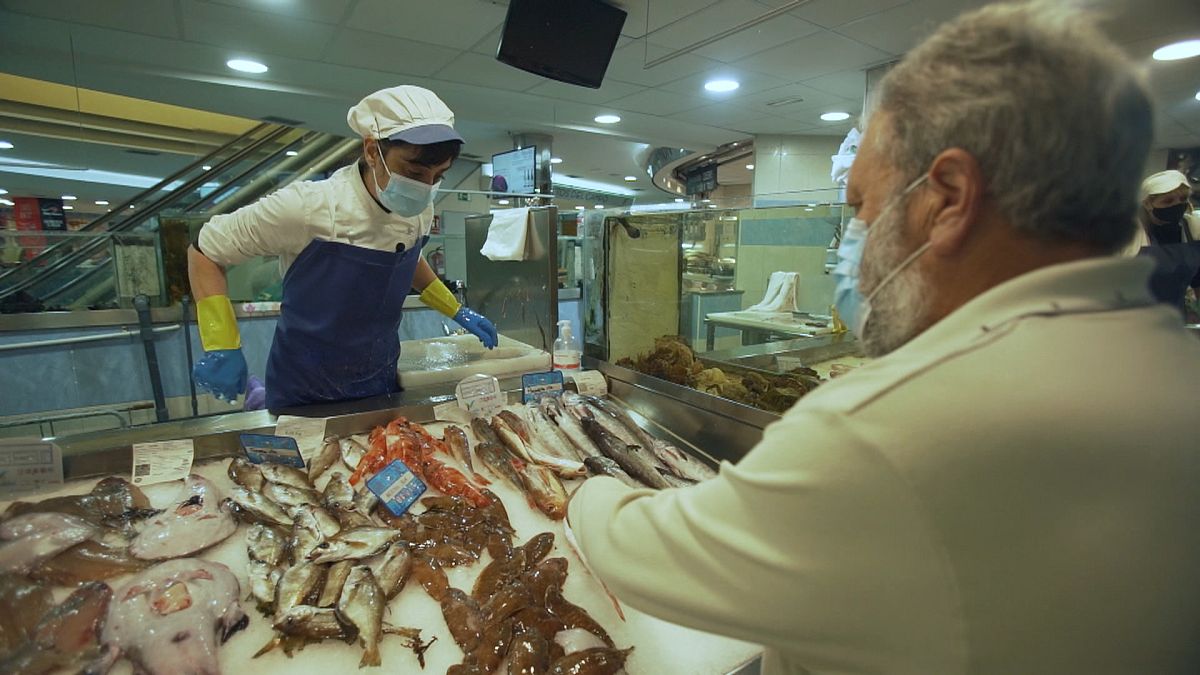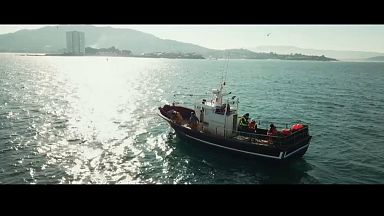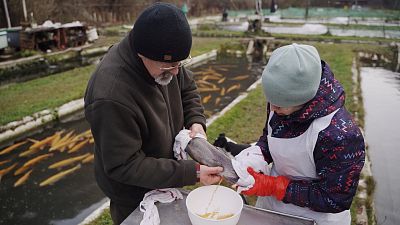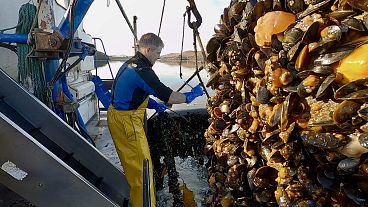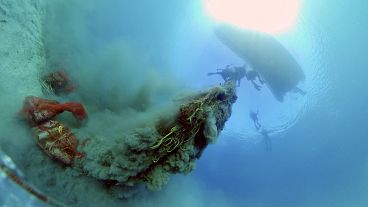How much do we know about the fish we eat? Find out more about the complex journey fish take to get to your plate and how the EU is ensuring its quality and safety on this edition of Ocean.
On a fine winter day in the Vigo estuary in Galicia, Spain, José Manuel Sotelo Durán, a local fisherman, will spend most of his time on a fishing boat with his coworkers. He's doing the job his grandfather and father taught him, his hard-earned fishing knowledge comes from generations in the business.
Whilst on the hunt for octopus, a popular local specialty, this fisherman makes detailed notes in his logbook. As José Manuel himself says, "we write down when we go out to sea, when we return, and what we catch. That's important because the sea’s resources are limited and need to be controlled."
The boat's log is just the start of a complex chain of information that doesn’t break until the catch reaches your plate. Precision is extremely important. Local coast guards sometimes inspect fishing boats and check the logbooks. The penalties for repeat violations are harsh. José Manuel tells me that they can revoke your license and "the fines then get bigger and bigger". He himself has only been fined once. He said he got distracted and it was just a mistake.
When his fishing boat returns with the day's catch, at the port the fisherman enters his log information into a digital system. This data helps to monitor the fishing of commercial species.
The flow of information continues as the fish go on sale in the auction hall. In Vigo, all operations are registered in a database that is fully transparent and accessible to the authorities. It helps ensure that only legal catches get to the market.
Bernardo Landriz is the Head of quality at the Port of Vigo. He tells me more about the fish are treated when they arrive on land:
"All the fish is sorted here by species and by size. Then it's washed with clean, ozone-treated seawater and put on fresh ice. The final step is printing the identification labels that will be displayed with the products until they are sold."
The labels reflect the higher value of local catches compared to fish from remote sites in the Atlantic. They're important for professional buyers. Irma Parlero Portela buys fish for her shop at the auction. She knows where the fish come from even without reading the labels, but she needs the proof of origin for her customers. She describes the process as "completely traceable".
The deliberate and controlled flow of information from fishermen to commerce to customer is part of European Union regulation. The goal is to help consumers make informed decisions about the fish they purchase, so shoppers can find exactly what they're looking for.
Europe imports around 70% of the fish it consumes, but surveys indicate a growing customer preference for local produce. With the COVID-19 pandemic causing disruption to global supply chains, more local seafood is now ending up on the domestic market.
Thanks to the constant flow of information throughout the supply chain process, Irma's clients can be sure that the fish they buy is caught less than a day ago in the local estuary. Irma says that the labels are especially important for young people who are less used to buying fish because they make sure "no-one can fool you". Luckily also for Irma, her clients trust her and they come to her to get what they know is local fish.
Most consumers also say they are quite happy with the current fish labels. But some suggest adding information about the environmental impact and showing a more detailed description of the catch area would be interesting.
Not all fish is sold locally though. Chilled lorries transport seafood across the country and abroad. But the information goes with it and this ensures the same food safety and security throughout Europe.
Transfrio Rias Baixas is a logistics company that operates hundreds of cargo vehicles. At any given moment it knows the precise location of each of its lorries. Every seafood package it handles carries a mandatory label that indicates the important details about what's inside. Jorge Abal Nartallo, its executive director describes what's on them:
"The label indicates the Latin name of the species, its commercial name, what fishing gear it was caught with, the date it was caught, its destination, the weight, of course, and all the other information that's required from the trader by the Spanish and the European regulators."
Getting to this point of fishing transparency was not an easy task for the Port of Vigo, a gateway for almost a million tons of fish arriving from Europe, Africa, Asia and America every year. As Lola Rois, Port Operations Manager at Vigo tells me, it was a fast evolution though, "we went from quite a lax system of document control to a strict one. And now everything is at a rather acceptable level of digitalisation. That's a rather recent development, I'm talking about the last five years."
Some of the seafood is transformed into preserves, but even that doesn't affect its traceability. Conservas Cerqueira is a historic factory that produces 70 million tins of seafood a year. Each of these tins can be traced all the way back to the boat that caught the fish. Manuel Aldao Curra the Deputy Director there tells me that all they require is the 'best before date' to "trace the information back to the catch".
European consumers rely on this regulatory system wherever they buy their fish and seafood, whether it’s on a market, in a restaurant, fresh, frozen, preserved, cooked, caught in the wild, or grown on a fish farm.
As well as guaranteeing safety and quality, this legal framework helps to protect the marine environment by impeding illegal fishing and by preventing the excessive exploitation of marine resources in Europe and around the world. This emphasis on sustainability is a crucial part of Europe's Farm to Fork initiative, the European Green Deal and the EU Biodiversity Strategy.
But it also helps private enterprises like seafood restaurants in Vigo. The pandemic means that local restaurants increasingly depend on returning clients. For this to happen, their clients must be able to trust the quality of the local fish and seafood on their menus.
At the end of the day, the entire process is all about making the fish's journey from sea to plate safe and smooth.
